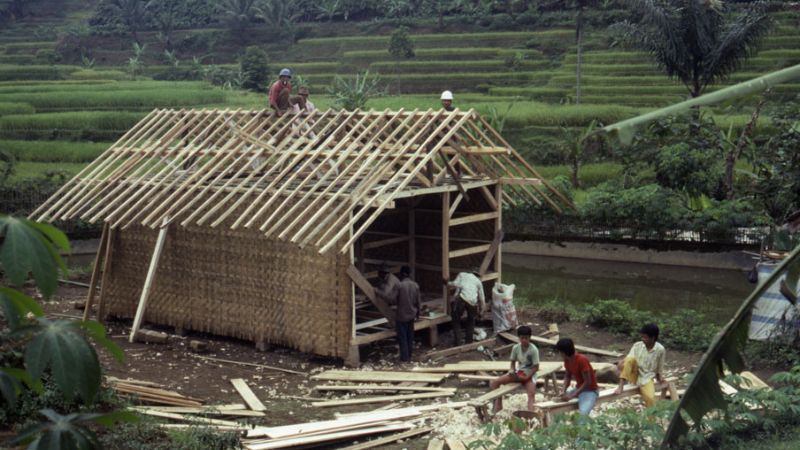From mud walls to climate wisdom

Why the future of architecture could be rooted in the past.
As the world grapples with the growing challenges of climate change, inequality, and cultural loss, a quiet architectural revolution is taking shape - not in the glass towers of cities, but in the earth-walled homes and stilted dwellings built by ordinary people, often without an architect in sight.
In a new episode of the Oxford Brookes Unscripted Podcast Series, Professor Marcel Vellinga, a leading expert in vernacular architecture, makes the case for why traditional, community-built structures deserve far more attention in contemporary design conversations.
“Vernacular architecture isn’t just about quaint village homes or exotic huts,” says Marcel. “It’s about how people have historically adapted to their environment using local materials, skills, and knowledge - and there’s a huge amount we can learn from that today.”
As Professor of Anthropology of Architecture at Oxford Brookes University, Marcel has spent decades researching how communities across the globe create their own buildings, shaped by culture, climate, and available resources. From adobe homes in Morocco to bamboo structures in Southeast Asia, these designs often achieve what many modern architects strive for: low-impact, climate-resilient, and deeply rooted in place.
But vernacular architecture is not just a model of sustainability. It also challenges the assumptions that underpin much of Western architectural thinking - particularly the idea that meaningful design must come from professional expertise.
“The built environment is often discussed in top-down terms,” says Marcel. “But vernacular architecture shows us what happens when people shape their own spaces according to their needs, values and traditions. That kind of agency is powerful.”
This matters more than ever as the field of architecture increasingly reckons with its colonial legacy. Marcel argues that acknowledging and learning from non-Western, non-professional forms of building is a key part of the movement to decolonise architectural education and practice.
Yet these forms of knowledge are often at risk. As urbanisation spreads and global development accelerates, many vernacular traditions are being lost - swept aside by cement, steel, and the pursuit of a uniform modernity.
Still, there is hope. In his conversation, Marcel highlights projects around the world that are working to preserve, revive, and adapt vernacular practices - sometimes blending them with new technologies to create truly resilient spaces.
For architects, planners, and policymakers, the message is clear: if we want to build a more sustainable and inclusive future, we need to start listening to the wisdom embedded in the past.
“There’s so much innovation in tradition,” Marcel says. “The challenge is learning to see it.”
